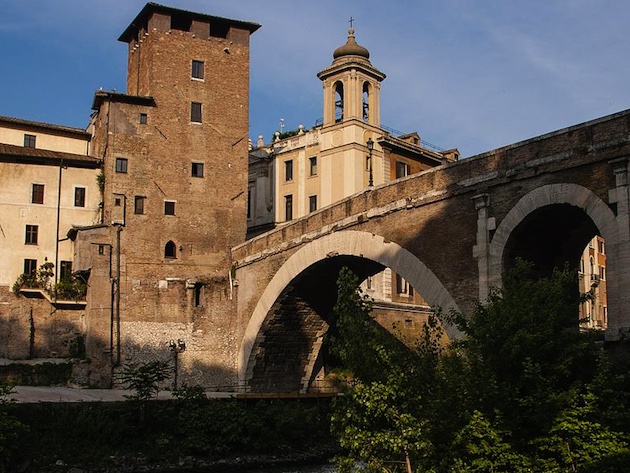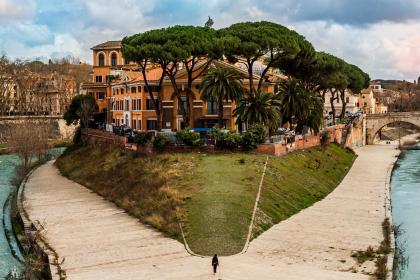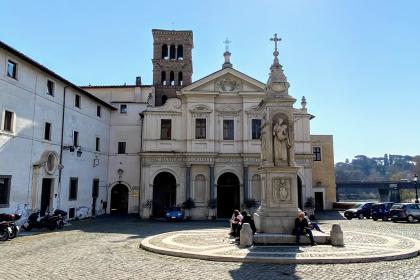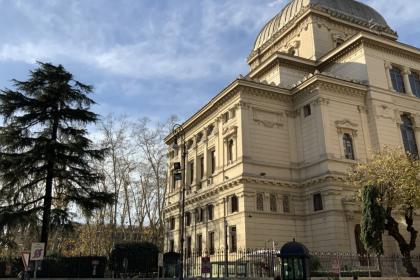
The church, annexed to the Fatebenefratelli Hospital on the Tiber Island, has very ancient origins: in fact it stood in the area of the temple of Iuppiter Iurarius. The oldest certain reference to the church is found in a bull of Pope Benedict VIII of 1018. For a long time the church with the adjoining monastery was entrusted to the Benedictine nuns and in the 11th-13th centuries it was the residence of the bishops of Porto.
The current church was rebuilt at the end of the 16th century on the ruins of the ancient one, of which nothing remains: during the construction under the main altar the remains of the body of San Giovanni Calibita were discovered, with the relics of other saints. The church was then renovated in 1640, the facade was completed in 1711 and 1742. Inside, the rich decorative apparatus is the work of Corrado Giaquinto, who also made the canvases and the decoration of the vault of the presbytery, the enlargement of the painting on the main altar "The Virgin hands the Child to San Giovanni di Dio" by Andrea Gennardi and the "Transit of Sant'Antonio". The sacristy and the adjoining room are both from the eighteenth century.
In the church there is the wonderful fresco of the "Madonna of the lamp", dating back to the thirteenth century also called Santa Maria Cantu Fluminis. A popular tradition tells that this image, once placed by the river with a lit votive lamp, was submerged in 1557 by a flood of the Tiber; despite this, the lamp continued to burn, thus arousing the amazement of the people and public devotion.
The Tiber Island

 Condividi
Condividi
The Church of San Bartolomeo all’Isola

 Condividi
Condividi
The old Jewish Quarter

 Condividi
Condividi
Information
Open only during religious celebrations
 Condividi
Condividi
Location
To find out about all accessibility services, visit the Rome accessible section.











































